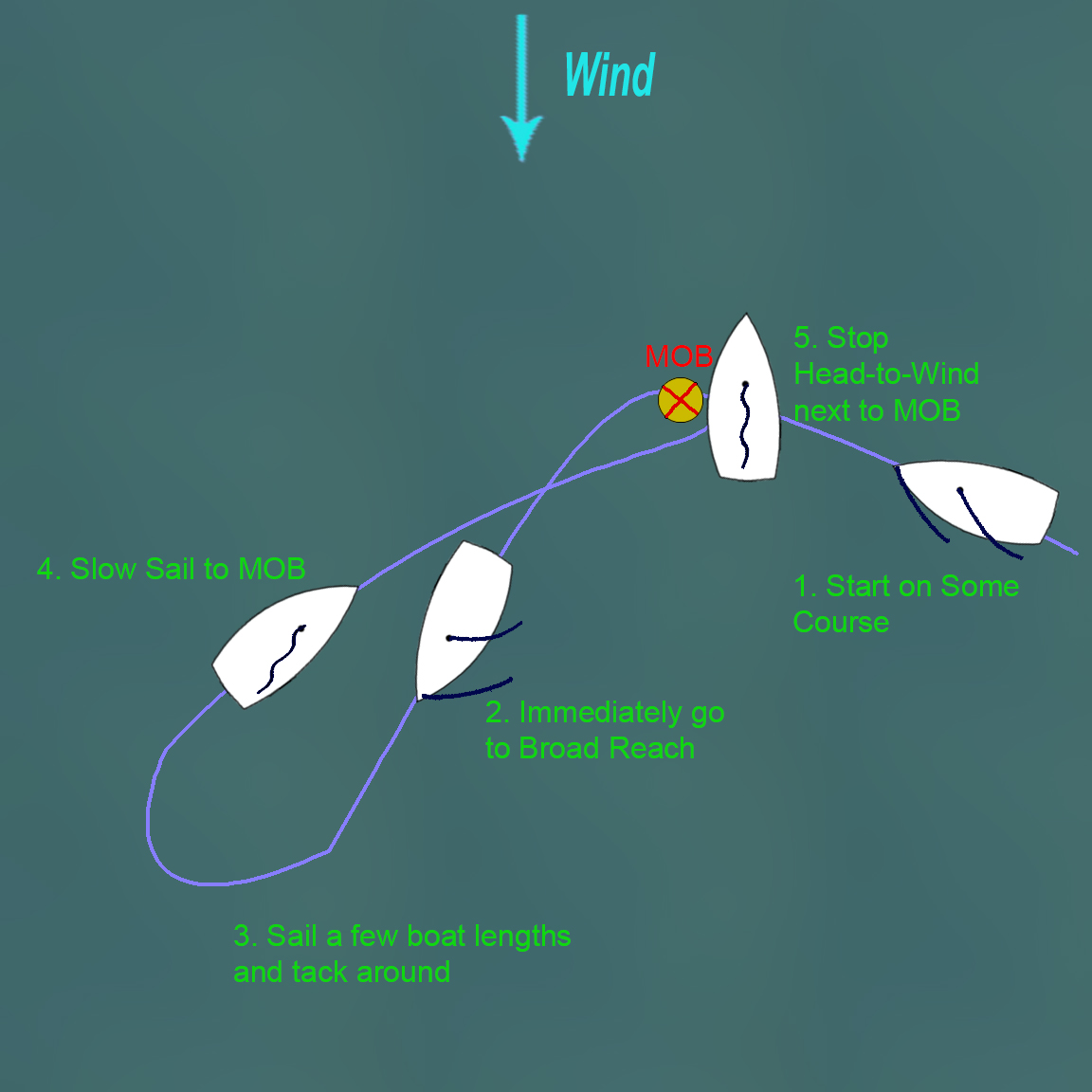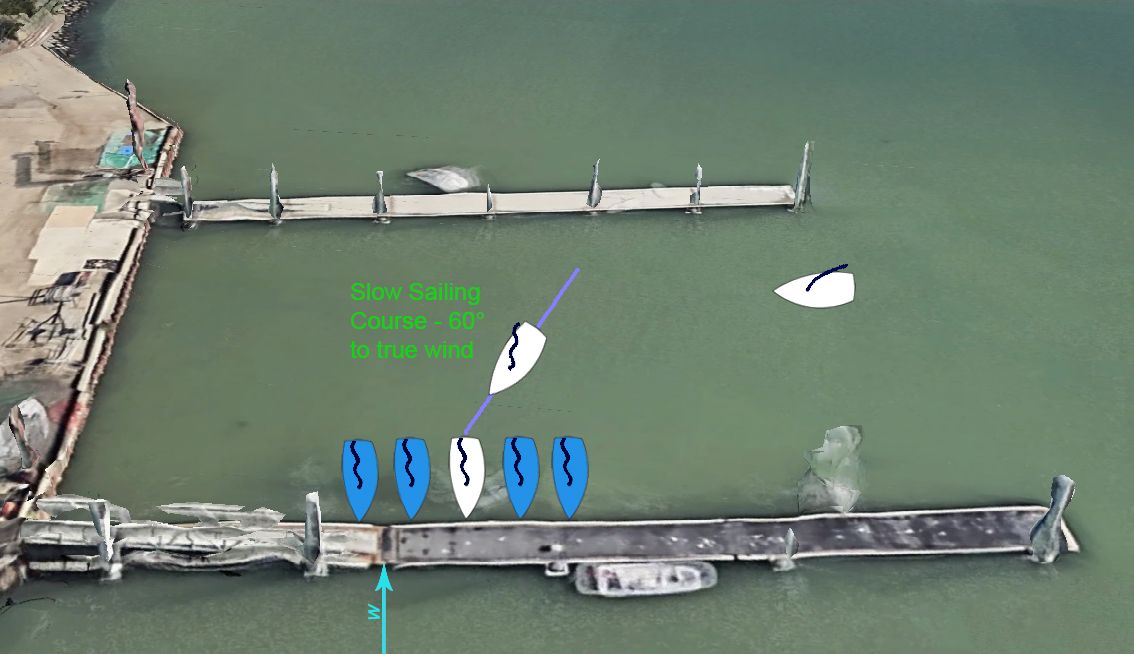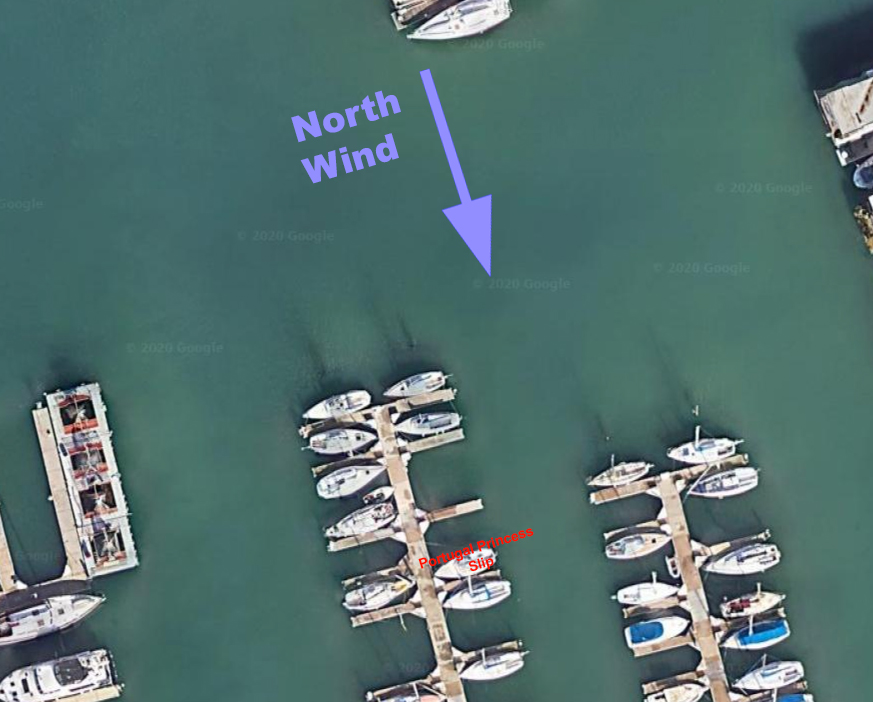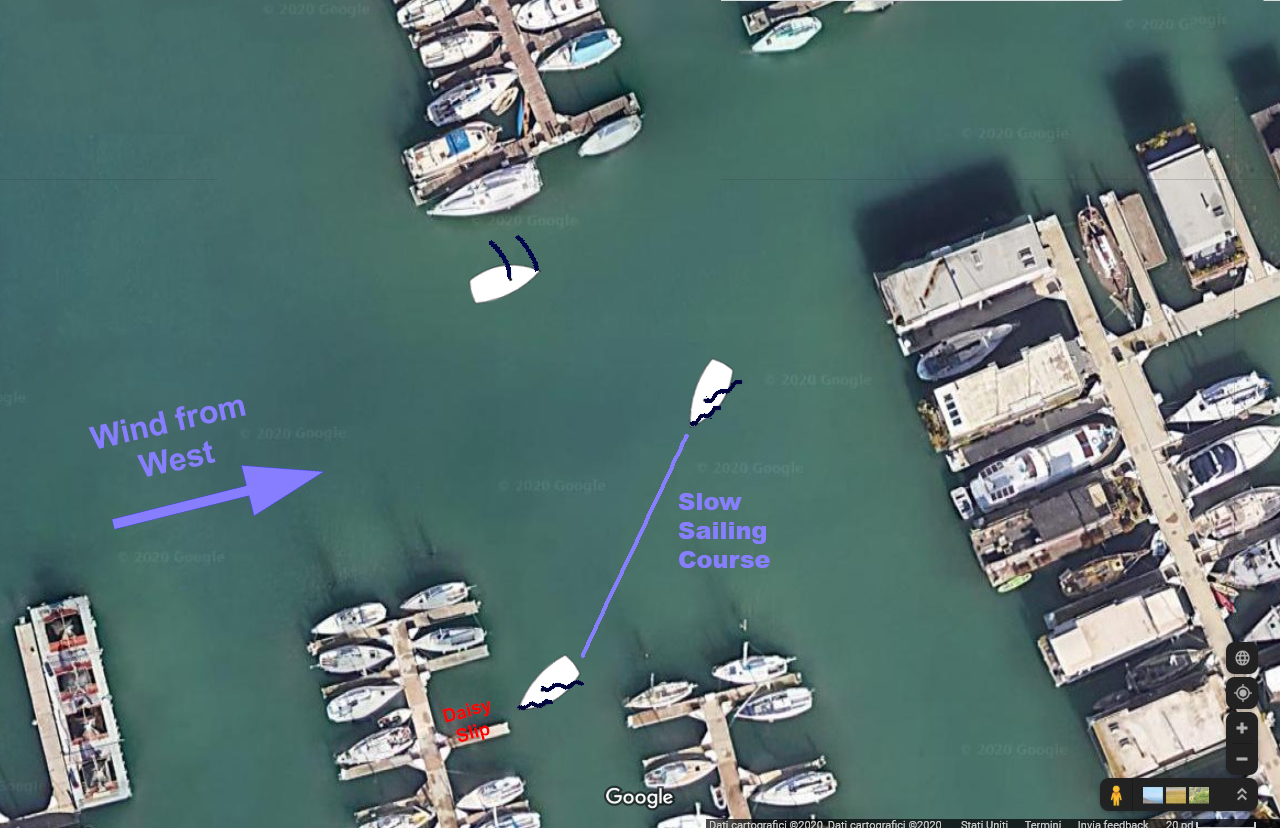Can You Slow Sail?
Slow sailing is a technique we teach for getting to a fixed point in space at a stop. The fixed point could be a dock, a buoy, a MOB, etc. The idea is to come in on a close reach approach course, where you have an accelerator and a brake. The accelerator is the main, pulling in on the fall, and the brake is the wind against the hull when you depower the main. The technique works for dinghies and for keelboats, although of course each boat responds differently, and each time you do it the dynamics of the wind and sea against the boat are different.
So my question is "Can you slow sail?" I'm not asking whether you can perform the basic technique – let's assume that. When you get on your final approach course for your target, can the boat slow sail to the target? Are you on a close reach? The reason I ask this question is that it is the most common problem I see teaching MOB and docking. I'll go through the cases below, but the take-away is that you should ask yourself this question when you start on your final approach and again if the wind shifts. If the answer is Yes, Bob's your uncle, so just slow sail to your target. If the answer is No, you have to do something, like adjust your course or abort the maneuver.
How to ask yourself the question
It's very simple, just see whether you have an accelerator and a brake when the boat is pointing toward the target. Pull in on the fall and see if the boat powers up without any luff in the sail. Let the sail out all the way and look for a big luff in the sail. If both of these happen, you can slow sail. If one of them does not, you can't. I can't emphasize enough that the boat must be pointed in the direction you want to slow sail when you do this.
The cases
I'll discuss MOB, dinghy docking in the South Basin, and West wind keelboat dockings at J-Dock. I will present only a cursory description of each procedure. The intent is to show you when you should ask yourself the question or a variant of it.
MOB
A basic technique we teach is broad reach away from the MOB and tack around to close reach back. This is not the only possible technique, and in keelboats you have more choices than in dinghies. The technique is described in more detail here and is illustrated below:

If you did everything correctly, you should be on a close reach right after you tack and the boat is pointing at the MOB or slightly upwind of it. The first thing you should do after the tack is to ask yourself the Question with the boat pointing at the MOB. If you cannot slow sail to the MOB, you will need to correct, a process described here.
Docking in the South Basin
We will assume West wind. Using the windsock on the dock, you will estimate where to turn to dock at your selected point.A close reach course is about 60 degrees to the true wind. Going between the docks with the main all the way out, make your turn upwind and look for a big luff in the sail. You will be on a close reach, so you know you can slow sail, and so in this case you need to ask yourself a different question: will this nice close reach course take you where you want to go, and not into another boat or the sea wall? If Yes, sail it, and if not, correct or bail out (preferably by tacking). It should look like this:

The wind can vary quite a bit near the dock, especially in a North wind, and you have to be alert for that. What started out as a nice close reach course may not be one after a wind shift. Making the necessary corrections or bailing out on a wind shift in close quarters near the dock is a skill acquired with practice.
A common error I see teaching is setting up a nice approach course to the dock, and then not keeping the boat on that course, and instead pointing too high or too low. You should sail that course until about half a boat length away from the dock and only then turn into the wind.
Docking a Keelboat at J-Dock in West Wind
When you launch or dock a keelboat, every boat is different and every slip is different. The same boat in a different slip will present a different situation. To convince yourself of this, just think about launching Portugal Princess in a North wind from its slip, the farthest one South. Or docking it into its slip in a South wind. Neither can be done under sail if the wind is up.

To keep things simple here, we'll assume Daisy, a Commander, in its usual slip. A west wind docking should look like this:

IMPORTANT NOTE: The course on this diagram is specific to both the target slip and the exact wind direction, so don't pay any attention to the turning point iin the diagram relative to other landmarks and boats in the Marina. You will have to figure this out each time you do it, and it will be different each time.
The setup for your approach is very different here than for a dinghy in the South Basin, but the slow sail procedure is very similar. As you get on your final approach course, ask yourself the Question, and you answer it the same way. Can you completely depower the sail, and can you accelerate? As in the South Basin, the wind will shift on you, so be prepared. The keelboats handle differently than dinghies, and they can do a lot more damage if you hit something.
Conclusion
Slow sailing is an important skill. If you can do it, you will nail your MOB and docking. So always check to make sure you can do it on the final approach course to your target, and that you can continue to do it after wind shifts.
When you subscribe to the blog, we will send you an e-mail when there are new updates on the site so you wouldn't miss them.



Comments